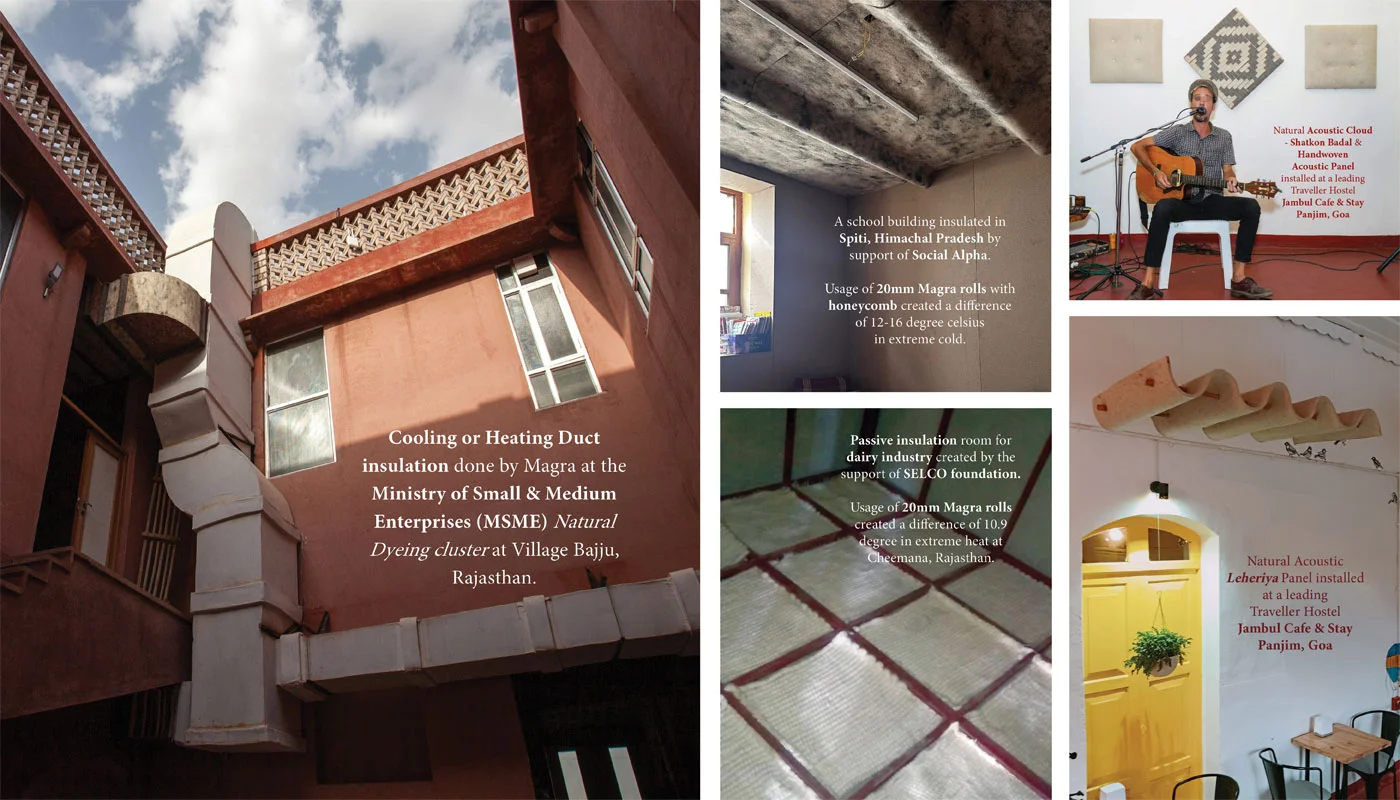Blog
The Hidden Costs of Fiberglass Insulation — And Why Magra Wool Is the Safer Choice

For decades, fiberglass insulation has dominated homes and construction sites across the world. It’s cheap, accessible, and does the job — or so it seems. But behind its pink batts and fluffy facade lies a far more troubling reality. Fiberglass insulation poses serious health risks to installers, residents, and the environment — risks that are too often swept under the rug.
What Is Fiberglass Insulation (And Why Is It Problematic)?
Fiberglass insulation is made by weaving fine glass fibers into rolls or loose-fill. While it insulates by trapping air, its production involves toxic chemicals like formaldehyde, phenol, and styrene, all of which are linked to respiratory illnesses, neurological harm, and even cancer.
These chemicals don’t just pose a risk during manufacturing — they continue to off-gas inside homes, polluting indoor air and harming long-term health. Add to that the physical irritation caused by loose fibers embedding into skin or lungs, and it’s clear fiberglass isn’t as benign as it looks.
Toxic Chemicals Common in Fiberglass Insulation
- Formaldehyde – A known carcinogen used as a binder, notorious for releasing VOCs into indoor air.
- Phenol – Causes skin burns, organ damage, and respiratory distress.
- Styrene – Classified as a possible human carcinogen by the EPA.
- Acetone, Acrylic Resins, Ammonia – Contribute to poor air quality, respiratory irritation, and long-term health issues.
The Environmental Toll
Fiberglass insulation is not just a human health risk — it’s a climate offender too.
- Carbon-intensive manufacturing: Requires extremely high temperatures, driving up energy use and emissions.
- Non-biodegradable: Adds to landfill pressure, with no end-of-life solution.
- Chemical runoff: Contributes to air and water pollution around manufacturing sites.
Enter Magra: Nature’s Insulation
In contrast, Magra wool insulation — made from the indigenous Magra sheep of Rajasthan’s Thar Desert — is a safe, sustainable, and high-performance alternative. This is not just insulation. This is a material that respects both people and the planet.
Why Magra Wool?
- Zero harmful chemicals: No formaldehyde, no phenol, no VOCs. Just clean, breathable air.
- Naturally hypoallergenic: No skin irritation, no respiratory distress — even during installation.
- Thermal and acoustic excellence: Comparable to, and often better than, conventional insulation.
- Carbon-smart: Wool sequesters carbon during the sheep’s life and requires much less energy to process than glass-based alternatives.
- Biodegradable: Returns to the earth at end-of-life, unlike fiberglass which lingers for centuries.
Health Risks of Fiberglass vs. the Comfort of Magra
| Risk Type | Fiberglass Insulation | Magra Wool Insulation |
|---|---|---|
| Skin & Eye Irritation | High – fibers embed in skin | None |
| Respiratory Impact | Severe – VOCs, dust | None – safe to handle |
| Carcinogenic Chemicals | Formaldehyde, Styrene, Phenol | None |
| Environmental Pollution | High – toxic production | Minimal |
| Biodegradability | Non-biodegradable | 100% biodegradable |
Final Thoughts
The building industry is at a turning point. We can no longer afford to compromise health for cost. The disguised dangers of fiberglass insulation — from chronic disease to environmental destruction — are well-documented, and yet many continue to choose it out of habit or lack of awareness.
Magra sheep wool insulation offers a new path: clean, circular, and conscious. It’s made by desert communities who have lived in harmony with harsh climates for generations — and now, their knowledge is insulating modern spaces with integrity.
It’s time to insulate the future, not just the walls.
